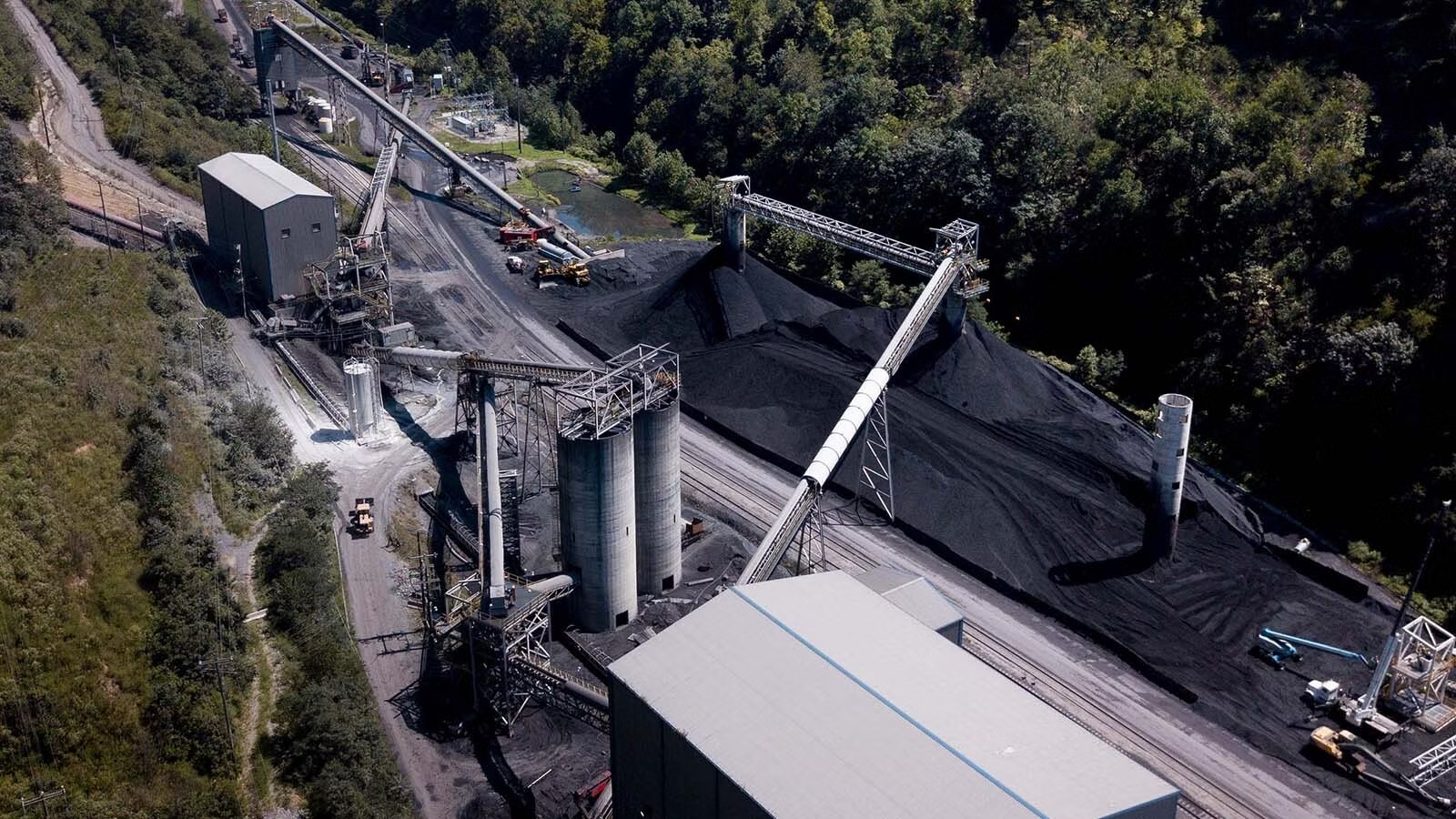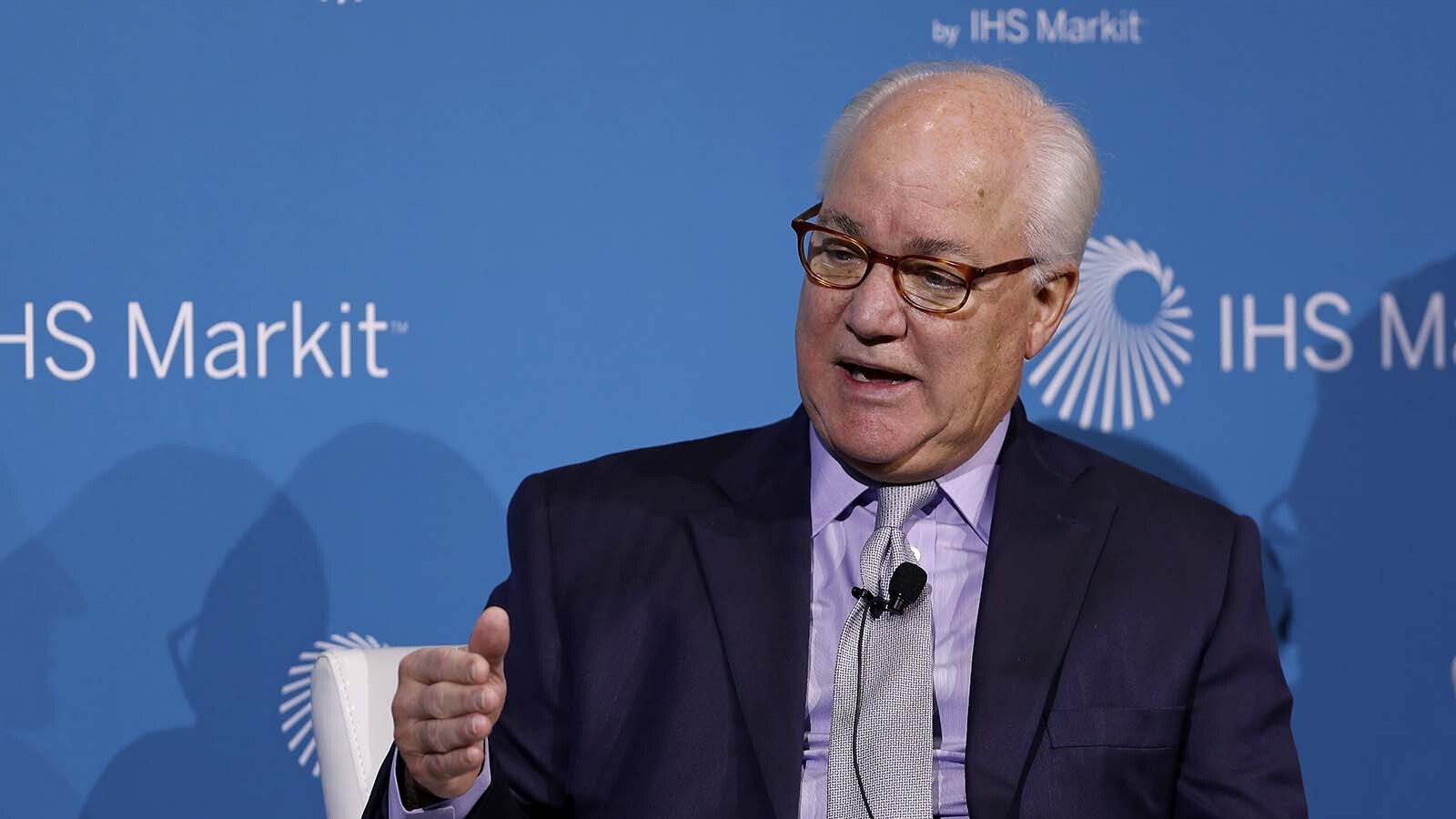Ramaco Resources in northern Wyoming says it’s discovered the largest unconventional rare earths deposit in the United States, a $37 billion bonanza that can make the Cowboy State ground zero for domestic production of the stuff.
Turns out the company is just getting started on determining the size of its prize.
The company has tested just a third of its 16,000-acre coal mine in Sheridan, which it bought sight unseen for $2 million in 2011.
The game plan then had been for the company to develop the mine as it would any other conventional coal mine, but now Ramaco is digging even deeper into its would-be coal mine, testing coal seams that would have been too deep to be economic.
“We only tested it for 100, 200 feet, which is about the maximum you’d ever want to do a conventional coal mine,” Ramaco Resources CEO Randall Atkins told Cowboy State Daily. “Much deeper than that, and the cost would be prohibitive to mine for $15-a-ton coal. But there are seams that go down almost to 1,000 feet. So, we’re drilling down into the deeper levels to see what’s down there.”
Scratching The Surface
What’s down there is much more valuable.
Ramaco’s Sheridan coal mine has 14 of these deep coal seams, Atkins said, and so far has drilled test samples and cores for just three or four of them.
The outcome of these new tests is just one of several giant puzzle pieces Ramaco is working through, as it circles a rare earth deposit of a magnitude to put it on par with those in Western China. Unlike China, however, Ramaco’s play will likely be much easier to develop because the rare earths are contained in much softer rock.
Ramaco estimated in May that it had 800,000 metric tons of rare earths. Since then, as testing has continued, that’s been revised upward to 1.2 million.
Atkins believes that number is headed upward yet again, as the company continues to define what is where in a $2 million dollar coal mine that’s now worth up to $37 billion and counting.
Soft Rock Means New Extraction Technique
Rare earths usually are found in uranium deposits as well as hard minerals like bastnaesite, monazite and even cobalt.
That’s true for the Bear Lodge deposit in Upton, for example, where a demonstration-scale plant is being built to pioneer a new, more cost-effective extraction technique for rare earths. The facility just got a finding of no significant impact from the Department of Energy, a next to last step before they can begin construction likely at the end of November.
That process is a very interesting one and could help make American rare earths very competitive in the global market. But, as needed as that is, it likely isn’t applicable to the deposit Ramaco Resources has found in Sheridan, Atkins said.
“Ours is in a softer material to work with than the hard mineral stuff,” he said. “The hard mineral stuff, you’ve got to pull it out and crush it first, then grind it, turn it into a powder. Then, because of its properties, it has to be leached in pretty caustic acid to refine.”
Because of that, most rare earths mined in the U.S. are sent to China for processing. There’s really only one active U.S. mine in California.
Ramaco, like the Upton Plant, is working with the Department of Energy’s national laboratories on developing new and novel methods for processing rare earths domestically. That way America will own its rare earths, start to finish.
One approach Atkins thinks might be conceivable for the Sheridan mine is to borrow extraction methods from the uranium and copper mining industry.
“They stick a well down and inject a fluid, and then it is pushed back up another well,” Atkins said. “So, that’s another thing we’re exploring. We’re involved with, frankly, several of these national labs who are also working on some very novel technologies on what extract (rare earths), using everything from membrane technology to microbiology.”

Company Will Still Pursue New Uses For Coal
If vertical wells are used to bring rare earths to the surface at Ramaco’s Sheridan mine, the coal in those particular areas might not get developed right away, if at all.
But that doesn’t mean the company is backing off the idea it’s had the last 10 years of finding new products for coal, products that Atkins is fond of saying will make the resource too valuable to burn.
Ramaco has been exploring using coal, or more specifically, the carbon in coal, to make things like graphene and synthetic graphite, higher value products that could make mining coal economically sound again.
That work will continue, Atkins said.
“We’re actually working, again, with two other national labs, Oak Ridge National Lab in Tennessee, on some very exciting work, which involves taking coal and using it as a precursor to make synthetic graphite,” Atkins said. “So, you may have read how the Chinese have restricted the export of natural graphite.”
The process Ramaco is working on could create a cheaper version of synthetic coal, loosening yet another stranglehold China is trying to place on materials critical to many technological devices.
Graphite is chemically stable, and a good conductor of electricity. It withstands high heat and has found numerous uses in technological applications. More recently, it’s in demand for electrodes, electric car batteries, and solar panels.
Carbon could also be used to make a melt-blown carbon fiber that can absorb carbon dioxide directly from the atmosphere.
“It looks like a Brillo pad,” Atkins said. “And it can basically absorb carbon dioxide from the atmosphere and then it would basically desorb it into a vessel, if you will. We could use that for direct air capture, and I think it’s probably ironic that we might be able to use it to, in essence, pull out carbon dioxide from the atmosphere.”
Casting A Wide National Security Net
It was Ramaco’s efforts to develop alternative carbon products that led to the discovery of rare earths at its Sheridan mine.
When Ramaco Resources reached out to the Department of Energy’s national laboratories in the quest to develop alternative carbon products from its coal, they ran headlong into a wide, national security net the federal government has been casting in a quest for domestic supplies of rare earths.
Rare earth elements are needed for all kinds of things. Lasers and guidance systems, cellphones and computers, and the list doesn’t end there. A relatively recent use for rare earths has been making wind turbines and batteries for electric cars.
Efforts to source rare earths has thus crossed party lines. The past seven presidential administrations have highlighted a domestic source of rare earths as vital to American interests.
“(National Laboratories personnel) were looking at any types of material they felt might contain rare earths,” Atkins said. “They looked at ash from power plants, they looked at acid mine drainage in the East, they sampled, you know a variety of coal in all different basins of the country. They looked at lignite, and they looked at, you know, anything they could find.”
It was the lab personnel’s idea to have Ramaco Resources mines tested for rare earths in 2018, and they looked at all of the mines Ramaco owned, not just the one in Sheridan.
A year later, the lab came back with results that were a surprise to everyone. The Sheridan mine was a rare earths sandwich. A rich layer of rare earths lay in the soft clay material both above and below the mine’s coal seams.
“They said, ‘Wow, we’ve tested the cores that you’ve sent from your Wyoming property,” Atkins said. “And we’ve discovered that they have some of the highest concentrations of magnetic heavy rare earths that we have found anywhere outside of western China.”
Huge Wyoming Impact
Ramaco Resources is just beginning to get its arms around the size and shape of rare earth deposits at its mine in Sheridan, much less the best extraction method for its unconventional deposit.
But the Wyoming impact could be huge, once the company has figured out what will be a long research and development chain.
“It’s much too early to probably project, you know, what it would mean for Wyoming in terms of precise job numbers and things of that nature,” Atkins said. “As we get further along in this we will, you know, do the normal type of socioeconomic development studies that we’ve done on other projects.”
But as a rough estimate, Atkins said, other mine projects Ramaco has done suggest at least 200 direct jobs per mine.
“That has a multiplier effect, and I don’t know in Wyoming whether it’s five or six other jobs, but you know, one job in mining then creates five or six other jobs in related ancillary supply,” he said.
Atkins believes that if the company is successful in threading the rare earths needle at the Sheridan mine, it could have much more impact than just mining a valuable resource for export.
“Our end game, if everything works out, is to be sort of a mine to magnet proposition, which would be great for Sheridan, great for Wyoming,” Atkins said. “It would provide sort of a vertically integrated rare earth business for the state.”
There’s much to be done, though, before the Sheridan mine that was meant to be a coal mine reaches that point.
“The interesting thing about rare earths — and it’s found in our case in parts per million,” Atkins said. “But to find that one element among, you know, a million other pieces of material is a pretty complicated exercise.”
Renée Jean can be reached at renee@cowboystatedaily.com.








